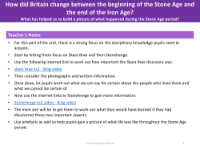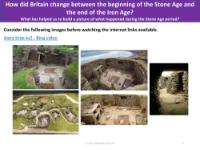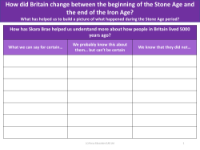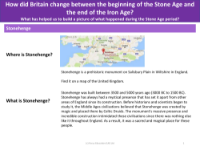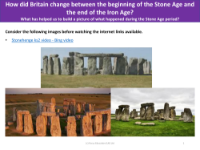What has helped us to build a picture of what happened during the stone age period? - Presentation
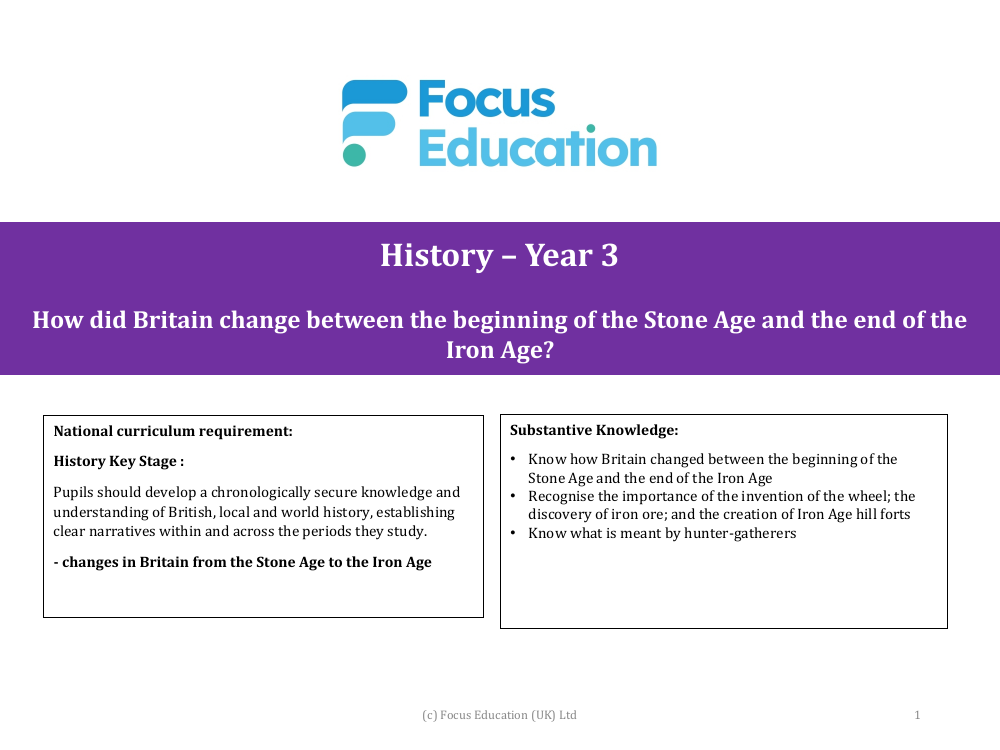
History Resource Description
Understanding the Stone Age period in Britain has been greatly enhanced by archaeological discoveries and research. Key sites like Skara Brae and Stonehenge have played a pivotal role in shaping our knowledge of this era. Skara Brae, a well-preserved Neolithic settlement in the Orkney Islands, was uncovered in the mid-19th century after being hidden beneath a sand dune for centuries. The site has offered an extraordinary glimpse into the lives of its inhabitants, revealing details about their homes, furniture, and daily activities. Similarly, the prehistoric monument of Stonehenge in Wiltshire has intrigued historians and archaeologists alike. Its construction dates back thousands of years, and it has long been associated with mystery and speculation regarding its original purpose, from astronomical observatory theories to a sacred burial ground.
Archaeological findings at these sites have been invaluable in piecing together the past. At Skara Brae, the discovery of circular stone houses with intact furniture such as beds, dressers, and hearths has provided a tangible connection to the Neolithic way of life. Meanwhile, Stonehenge's massive stone arrangements and the human remains found nearby have led to various interpretations about its use, including ritualistic ceremonies and funerary practices. These sites, along with other archaeological evidence, have allowed historians to construct a more accurate and detailed narrative of life during the Stone Age, shedding light on the evolution of human settlement, technology, and culture from the beginning of the Stone Age to the end of the Iron Age in Britain.
